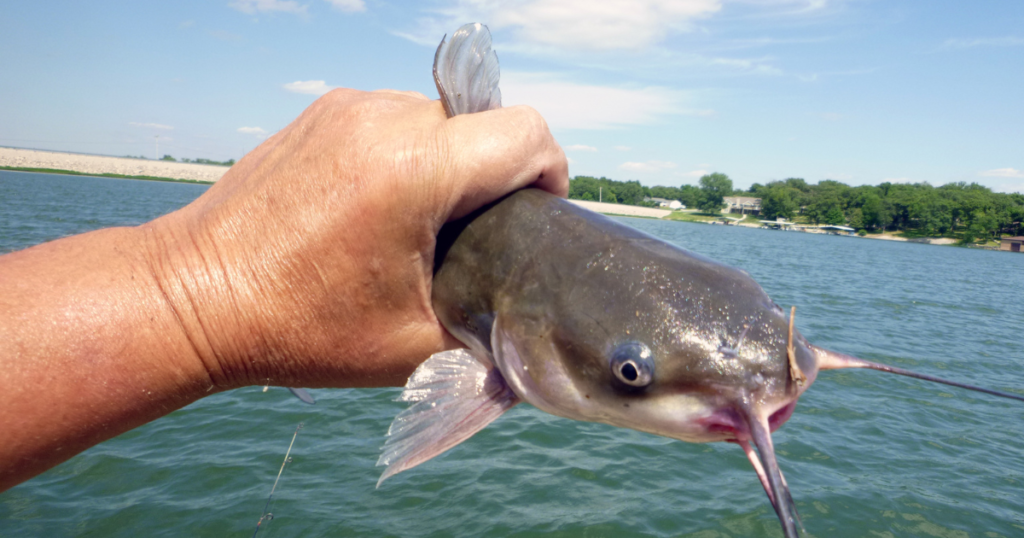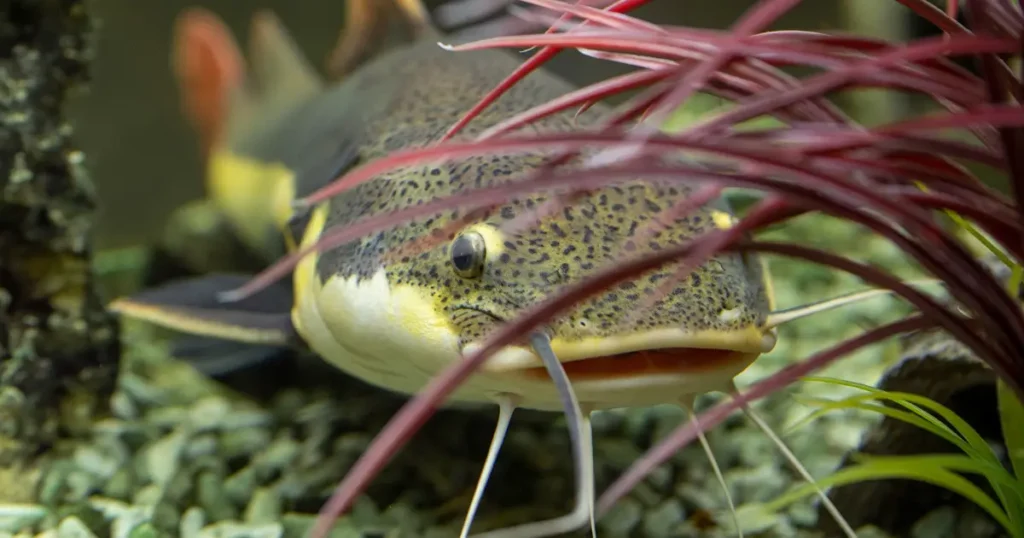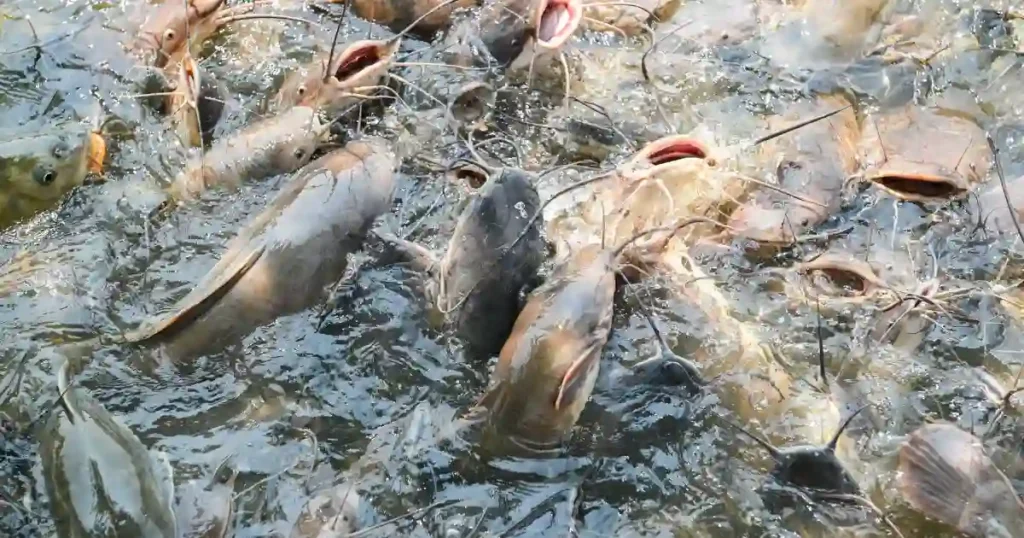Catfish are often perceived as scavengers that only feed off the bottoms of rivers, lakes, and oceans. However, the diverse catfish species display feeding behaviors that vary by location, season, and time of day.
While some catfish do have adaptations suited for bottom feeding, they are better classified as opportunistic wolves that capitalize on a wide variety of food sources.

What Defines a Bottom Feeder Fish?
Bottom feeders are fish adjusted to feed on or near the bottom substrate of their habitats. Factors of true bottom feeders include:
- Mouths facing downwards to provide along the bottom
- Barbels (whiskers) containing tastebuds to locate food
- Ability to feed on benthic organisms and surface-dwelling invertebrates
- Burrowing in mud or living on rocky, sandy bottoms
- Examples: loaches, stingrays, demersal fish, some sharks and catfish
Meanwhile, fish like catfish utilize more water column and structure, indicating them from these dedicated bottom feeders.
Diversity Among Catfish Species

Over 3,000 identified catfish species display an array of behaviors. This includes popular U.S. game fish like:
- Channel catfish: Known to feed heavily on insects, bait fish, vegetation
- Blue catfish: More predatory, capable of feeding on live fish and crustaceans
- Flathead catfish: Ambush predators hiding among structures
Channel Catfish
Channel catfish (Ictalurus punctatus) are likely the most popular for U.S. freshwater anglers. Native to North America, they are stocked in systems across the country for their resilience, feeding habits, and size potential exceeding 50 pounds.
Stocky, smooth-skinned channel cats patrol structure-rich habitats using taste receptors in their barbels to locate prey. They demonstrate versatile feeding behaviors spanning surface, midwater, and bottom zones.
Blue Catfish
The mammoth blue catfish (Ictalurus) reaches triple-digit weights by ambushing schools of baitfish, pursuing crustaceans, and scavenging along productive river bottoms. Their range extends throughout the Mississippi, Missouri, and Ohio River basins.
Distinguished by their forked tail, blues utilize vast home ranges along freshwater tributaries and reservoirs, demonstrating seasonal migrations in response to food availability.
Flathead Catfish
Flathead catfish (Pylodictis olivaris) are aptly named for their broad, flat head and lower jaw. Primarily residing in rivers, they prefer cleaner waters with rock and log hideouts to launch surprise attacks.
Flatheads ambush live prey like fish, frogs, and crayfish rather than scavenging like other bottom feeders. Their unique niche allows them to thrive among other catfish species.
While these catfish share some classic bottom feeder adaptations like barbels and downturned mouths, they are far from entirely reliant on bottoms to feed. Much of their diet comes from structure, vegetation, and schooling baitfish throughout the water column.
“I look for blues feeding on the surface at night, then probe deeper structure with cut bait for trophy flatheads,” said Tom H., a veteran catfish angler.
When and Where Catfish Feed

Catfish feeding locations depend significantly on the body of water, available structure, season, and time of day. Their flexibility allows them to capitalize on resources in multiple zones.
- Surface feeding: Catfish often feed near dusk, gobbling up insects or pursuing baitfish near the surface.
- Midwater feeding: Suspending channel cats ambush passing schools of shad in open waters.
- Bottom feeding: At night or during colder months, scavenging along structure-rich bottoms.
Summer offers prime feeding conditions for all species to pack on weight by targeting baitfish. Target creek channels, main lake humps, and weed edges during summer nights.
Winter slows catfish into inactivity, broken up by occasional warm spikes. Focus efforts along deep river bends and submerged structures.
Catfish Consumption of Prey
A wide variety of food sources are vital to catfish’s status as both sport and food fish. Their flexible, opportunistic diet consists of:
Insects & larvae
- Mayflies
- Dragonflies
- Midges
Crustaceans
- Crayfish
- Shrimp
- Mussels
Baitfish
- Shad
- Bluegill
- Carp
Carrion
- Decomposing flesh
Aquatic vegetation
- Coontail
- Pondweed
- Algae
Catfish will target the most abundant food source available within their habitat and have been known to adapt to eat frogs, worms, leeches, and even small mammals! This variety keeps catfish populations stable through changes in the environment.
Their unique flexibility in exploiting structure, vegetation, and schooling baitfish within freshwater systems is critical to sustained success.
“The best catfishermen I know aren’t afraid to experiment with different baits and locations” – Jeff W., charter fishing guide.
Do Catfish Fit the Bottom Feeder Mold?
Compared to strict bottom feeders like loaches, stingrays, or sea cucumbers that rely entirely on resources along bottoms, many catfish stand apart. Species like blues, channels, and flatheads are better classified as versatile opportunistic predators.
Meanwhile, other catfish like madtoms, glass cats, and banjo cats share more similarities with these solely bottom-dwelling fish. They are built to constantly scour lakes and river bottoms, feeding on crustaceans, larvae, vegetation, and carrion.
So, while positional and dietary behaviors differ significantly across species, many catfish possess superior adaptations like barbels and downward-sloping mouths to feed along bottoms when necessary. This allows them tremendous success across more fisheries.
Their classification as game fish for anglers further separates favorites like channel and blue cats from groundfish caught commercially in mass. Not all “catfish” share the same niche despite taxonomic relations.
“Lucrative commercial fisheries prove the wide appeal of catfish beyond just bottom feeding oddities” – Alice S., fisheries biologist.
Best Baits and Methods for Catching Catfish
Choosing productive fishing holes and the best bait keeps catfish biting on one’s line. Catfish are most active during low light periods near dawn and dusk. Target areas like creek holes, submerged structures, along bluffs, etc., that provide shade and concealment before transitioning to feeding grounds.
Prepared catfish baits are famous for their convenience and scent attraction. Commonly prepared baits include:
- Dip baits
- Punch baits
- Dough baits
- Live bait rigs
Natural bait choices liked by catfish include:
- Nightcrawlers
- Minnows
- Shad
- Leeches
- Crayfish
- Worms
Homemade stink bait and chum from rotten meats, fish, or vegetative matter can yield messy but rewarding results. Pack a 5-gallon bucket to churn the water.
Drift Fishing with live bait rigs is a productive technique from boats or downstream by wading. Patience is vital, as catfish may follow floating bait for some time before striking.
Targeting shoreline structures, creek channels, submerged timber, and along weed lines are proven catfishing hotspots. Following these contours from shore or boat leads anglers directly to actively feeding catfish.
Regional Catfish Considerations
Catfish species in North America vary significantly across different fisheries and systems. Here are some critical regional behaviors and bait preferences to consider:
Northeastern bullheads and madtoms – Target smaller creek dwellers with nightcrawlers
Midwestern & Great Lakes channels, blues, flatheads – Catch big lake runners near structure on cut bait
Southeast white and black bullheads – Fish farm ponds for feisty eaters using liver or stink bait
Gulf Coast & Florida gaff topsail and hardhead species – Chum, open water with fresh dead shrimp
West Coast brown bullheads, channel cats – Locate backwater sloughs and bait with nightcrawlers
Fishing Methods and Gear for Catfish
Rod & Reel Combos – Medium to heavy power fiberglass rods with quality reels spooled with 20-50 lb. test monofilament or braided line make a good starting point.
Hooks & Weights – Strong 2/0 – 8/0 short-shank live bait hooks. Enough weight like pyramid sinkers or sliding egg weights to reach the bottom structure.
Terminal Tackle – Pro-grade swivels, leader line, floats, and beads help prevent line twists when using cut bait on bottom rigs.
Landing & Handling Tools – Long-handled nets, wet rags, fish grippers, and needle-nose pliers allow anglers to unhook cats while avoiding spines.
Patience and persistence are required when targeting trophy-sized fish. Pay attention to surface activity, properly rig bait, and be prepared for long fights when hooking into heavy cats.
Consumption Safety & Preparation
Catfish are safe and sustainable, eating as high in protein and lower in mercury concerns compared to other freshwater fish. Consider where catfish are caught when cooking, as water quality influences taste and recommended meal frequency.
To clean catfish:
- Place fish belly up and slit from anal fin to bottom lip
- Remove viscera and scrape or peel away skin
- Rinse thoroughly and cut into fillets
- Soak in milk or brine solution to remove unwanted flavor (optional)
Popular cooking methods include baked, air-fried, blackened, or breaded and fried in vegetable oil. Serving with homemade tarter sauce, lemon juice, Cajun seasoning, onions, relish, etc., based on preference.
Are Catfish Bottom Feeders? FAQs
What foods do catfish like to eat?
Catfish eat a variety of foods, including insects, bait fish, plants, and eggs from the bottom or open water. Different catfish species have different dietary preferences.
Do catfish catch and eat other fish?
Yes, many catfish are opportunistic predators that will catch and consume smaller bait fish as part of their flexible diet. Some catfish, like blue and flathead catfish, specialize in hunting other fish.
Are catfish bottom scavengers?
While some catfish species scavenge along bottoms, many get food from both bottom and open waters, depending on conditions. So, not all catfish rely solely on bottom scavenging.
Will catfish chase moving fish?
Yes, catfish like blue and channel catfish will actively chase schools of bait fish throughout the water as conditions allow. They are not just bottom dwellers.
What bait or meals do catfish refuse to eat?
Catfish are rather indiscriminate feeders, but baits like chicken liver, hot dogs, and stale bread may be ignored compared to live fish, crayfish, or other natural baits.
What is catfish their favorite food?
There is no universal favorite food, but bait fish like shad and bluegill, insects, crustaceans, and even carrion are common catfish favorites.
Wrap Up
While catfish species possess adaptations like barbels and downturned mouths well-suited for bottom feeding, classification as solely bottom feeders fails to capture their diversity of behaviors. The flexible nature of channel, blue, and flathead catfish allows them to capitalize on resources throughout the water column to grow as pursuit predators and resilient survivors.
From ripping current breaks to open water bait balls and driftwood tangles to silted creek holes, trophy catfish cover expansive ranges in exploiting structure and food availability. Their unique place in freshwater systems as largely indiscriminate feeders should further compel all anglers to explore various baits, rigging methods, and fishing holes tailored to hook these hard-fighting fish.












2 thoughts on “New Research Exposes: Are Catfish Bottom Feeders?”
Comments are closed.